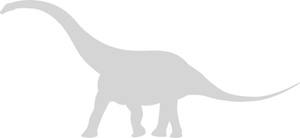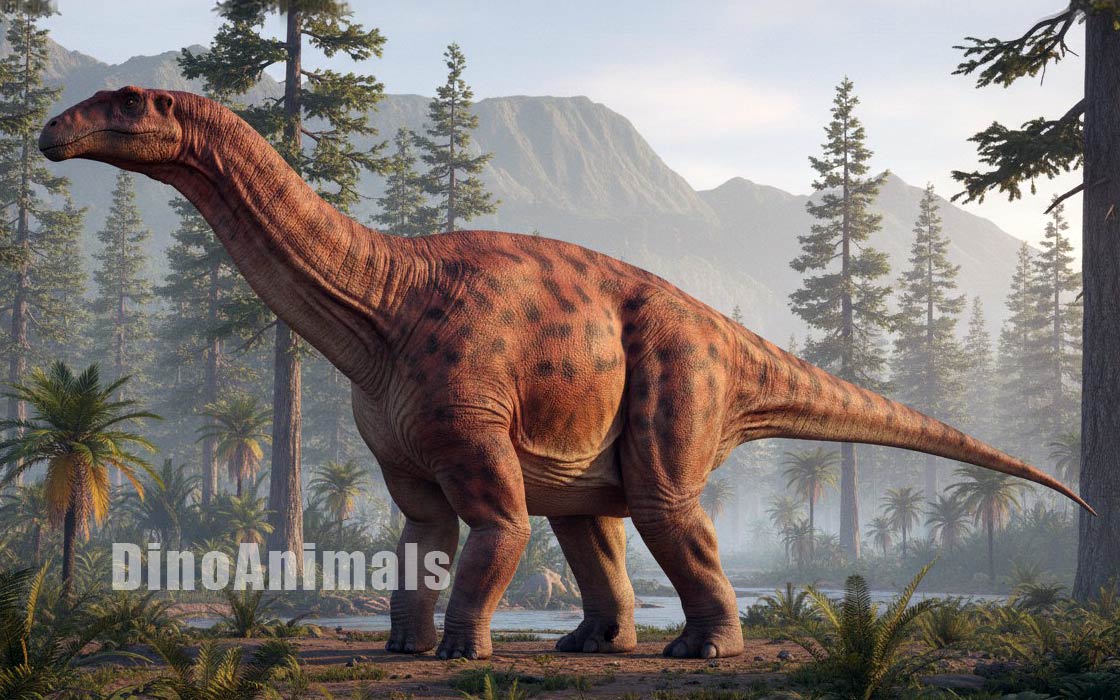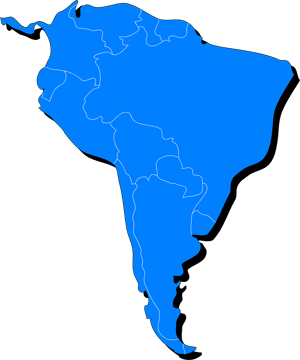Every month, 100,000 readers use the Dinosaur Database, but we receive no support from you. Developing and updating the database requires a lot of work. If you want it to remain open and be updated, please support us via the "Buy us a coffee" button available on every page or via the Support page.
Dinosaur: Astigmasaura genuflexa

| Length*: | 10 m | 32.8 ft |
| Weight*: | 7 t | 15,432 lb |
*The largest known specimen
Period
Epoch: Late Cretaceous
Stage: Cenomanian
Years: 100.5–93.9 Ma
Details
Status: valid
Author: Bellardini et al.
Year: 2025
Distribution
Area: South America
Country: Argentina
Region: Río Negro
Formation: Huincul
Description
Astigmasaura genuflexa
Astigmasaura genuflexa is a newly described rebbachisaurid sauropod from the Lower Huincul Formation of Neuquén Province, Patagonia, Argentina. Dating to the Cenomanian stage of the Late Cretaceous (~100–94 Ma), the genus is known from an incomplete but articulated skeleton. The name combines Latinized elements: astigma (“without signs”) and Greek saura (lizard), referencing local naming traditions; the species name genuflexa (“bent-knee”) highlights the unusual discovery posture of the hind limbs angled posteriorly .
As the first rebbachisaurid discovered in the Huincul Formation with articulated hind limbs, Astigmasaura significantly enhances our understanding of rebbachisaurid anatomy and mid-Cretaceous sauropod diversity in South America.
Geographic Location
Type locality: El Orejano site, Neuquén Province, Argentina
Physical Characteristics
The holotype (MAU‑Pv‑EO‑629) preserves:
- 20 presacral and 19 caudal vertebrae
- Most pelvic components (ilium, pubis, femur, tibia, and fibula)
- Articulated hind limbs, including metatarsals and pedal phalanges
Estimated body length is 8–10 m (26–33 ft), based on comparisons with similarly sized rebbachisaurids such as Cathartesaura and Limaysaurus. The mass is estimated at 4–7 tonnes, typical for medium-sized diplodocoids.
Key anatomical features include:
- Articulated, strongly posteriorly flexed hind limbs, as reflected in the species name
- Robust caudal vertebrae with expanded lateral processes
- Ilia with proportionally elongated preacetabular processes
- Femora with moderately developed entepicondyles, typical of rebbachisaurids
- Tibiae and metatarsals showing adaptations for firm support and locomotion
These diagnostic traits support its placement as the sister taxon to (Itapeuasaurus + Sidersaura) within Rebbachisauridae.
Diet and Feeding Habits
As a herbivorous diplodocoid, Astigmasaura likely browsed low- to mid-level vegetation, such as ferns, cycads, and early angiosperms. Its toothless rostral jaws, typical of rebbachisaurids, suggest cropping rather than mastication. Although cranial material is lacking, its phylogenetic context implies a feeding strategy similar to its Gondwanan relatives.
Habitat and Distribution
Astigmasaura inhabited a semi-arid fluvial floodplain during the Cenomanian. The Lower Huincul Formation comprises sandy channels and overbank deposits. This period saw a rich sauropod assemblage, including titanosaurs (Argentinosaurus, Chucarosaurus) and other rebbachisaurids (Cathartesaura, Sidersaura). Predatory dinosaurs in the ecosystem included carcharodontosaurids (Mapusaurus), abelisaurids (Skorpiovenator), and megaraptorans (Aoniraptor).
Behavior and Social Structure
Articulated limb preservation suggests minimal post-mortem disturbance, possibly indicating rapid burial via fluvial sedimentation. The robust hindlimbs imply strong support and moderate-speed locomotion, aligning with other rebbachisaurids. As gregarious herbivores, rebbachisaurids may have moved in small herds, though no direct trackways or communal burials are known.
Discovery and Research
Excavated in 2017 at the El Orejano locality, the specimen was preliminarily described in 2024 as a basal rebbachisaurid. In mid-2025, Bellardini et al. formally named and described Astigmasaura genuflexa, providing detailed phylogenetic placement among South American diplodocoids. The specimen is one of the most complete rebbachisaurid skeletons from the Huincul Formation.
Significance and Notable Facts
- First articulated hind-limb rebbachisaurid known from the Lower Huincul Formation
- Sheds light on hind-limb anatomy and locomotion in diplodocoids
- Increases known rebbachisaurid diversity in mid-Cretaceous Patagonia
- Highlights modular regional evolution of Gondwanan sauropod faunas
Conclusion
Astigmasaura genuflexa is a vital discovery for rebbachisaurid paleontology, offering valuable anatomical and ecological insights. Its combination of articulated hind limbs and diagnostic vertebral and pelvic features helps clarify evolutionary trends within Diplodocoidea and enhances understanding of Patagonian sauropod diversity during the Cenomanian.
Locations
Sources
Material: Articulated presacral and caudal vertebrae, pelvic elements, femur, tibia, fibula, metatarsals, pedal phalanges
References: Bellardini, F., Filippi, L. S., Carballido, J. L., Garrido, A. C., & Baiano, M. A. (2025). Side by side with titans: a new rebbachisaurid dinosaur from the Huincul Formation (upper Cenomanian) of Patagonia, Argentina. Cretaceous Research.
Bellardini, F. (2024). Exploring rebbachisaurid hind‑limb anatomy on the basis of a new articulated specimen from the Huincul Formation (upper Cenomanian) of Neuquén Basin, Patagonia, Argentina. Historical Biology




